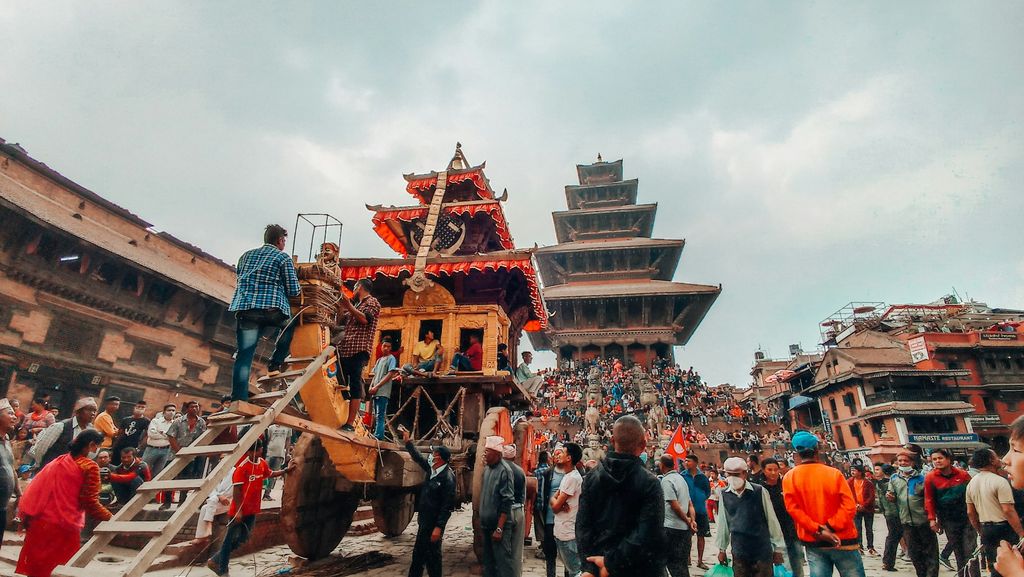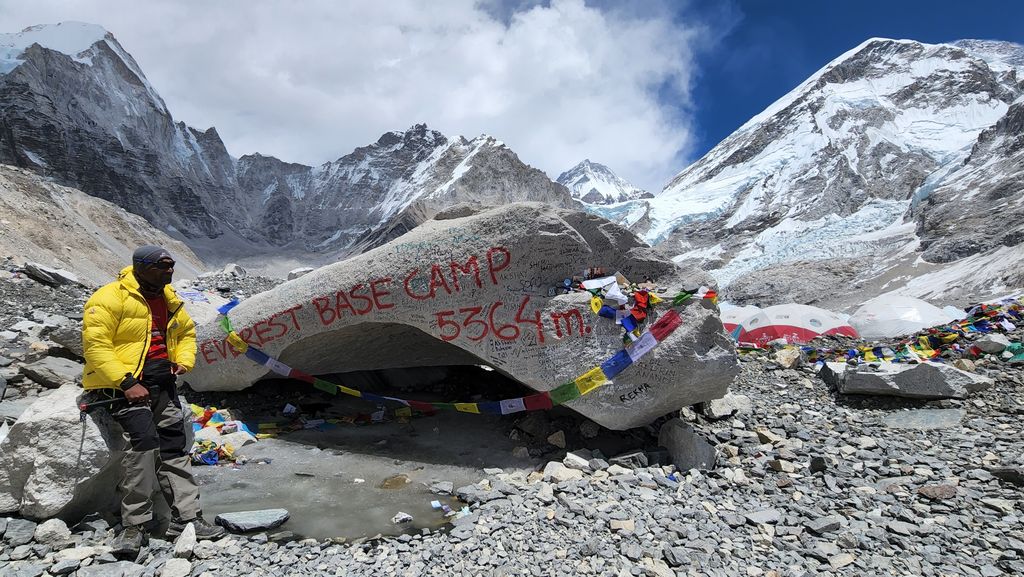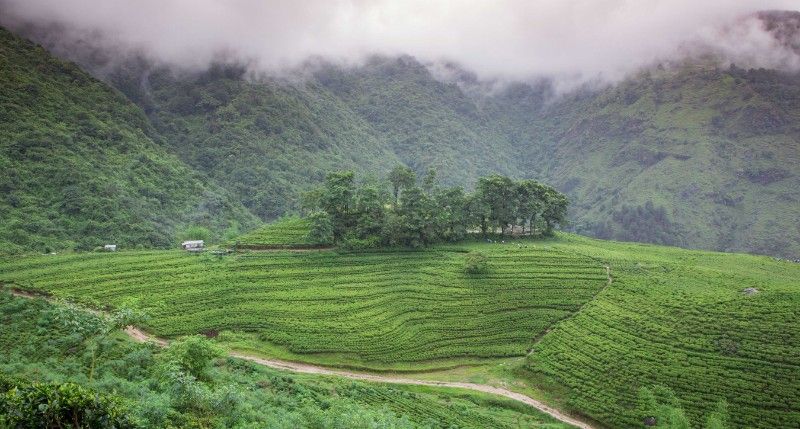Ultimate Guide to Trekking in Nepal

Nepal – the land of the Himalayas – is a trekker’s paradise. With eight of the world's 14 highest peaks, including Mount Everest, and countless scenic trails, Nepal offers something for every trekking enthusiast, from beginner hikers to seasoned mountaineers. Whether you're seeking spiritual solitude, cultural immersion, or high-altitude adventure, Nepal delivers it all.
But before you lace up your hiking boots and set off on your Himalayan journey, there are a few things you must know. This ultimate guide will help you plan your trek smoothly, stay safe, and make the most out of your Nepal trekking experience.
Why Trek in Nepal?
Nepal’s trekking trails are globally famous for their natural beauty, diversity, and rich cultural experience. Here’s what makes trekking in Nepal so special:
- Scenic Landscapes: From lush rhododendron forests and terraced fields to alpine meadows and snow-capped peaks.
- World-Class Trails: Everest Base Camp, Annapurna Circuit, Langtang Valley, Upper Dolpo, and more.
- Cultural Experience: Encounter warm hospitality, traditional villages, monasteries, and diverse ethnic communities.
- Accessible Treks: Options for every fitness level and schedule – from 3-day hikes to 3-week expeditions.
Best Time to Trek in Nepal
Timing is everything in the Himalayas. Here are the main trekking seasons:
1. Autumn (September to November) – Best Season
- Clear skies, fresh air, and stable weather.
- Excellent visibility and perfect conditions for photography.
2. Spring (March to May) – Beautiful Blossoms
- Rhododendrons in full bloom.
- Warm temperatures and longer daylight.
3. Winter (December to February) – Quiet and Cold
- Fewer trekkers, serene trails.
- Suitable for lower-altitude treks like Poon Hill or Mardi Himal.
4. Monsoon (June to August) – Lush but Wet
- Best avoided for most treks due to heavy rainfall and leeches.
- Good for rain-shadow areas like Mustang and Dolpo.

Popular Trekking Routes in Nepal
1. Everest Base Camp Trek
- Duration: 12–14 days
- Highlights: Namche Bazaar, Tengboche Monastery, Kala Patthar
- Best For: Those seeking to witness Mt. Everest up close.
2. Annapurna Circuit Trek
- Duration: 14–18 days
- Highlights: Thorong La Pass (5,416m), Muktinath, diverse landscapes
- Best For: Variety in scenery and culture.
3. Langtang Valley Trek
- Duration: 7–10 days
- Highlights: Tamang culture, Langtang glacier, Kyanjin Gompa
- Best For: Short treks near Kathmandu with fewer crowds.
4. Upper Dolpo Trek
- Duration: 18–25 days
- Highlights: Phoksundo Lake, Shey Gompa, remote Tibetan culture
- Best For: Off-the-beaten-path adventurers.
5. Mardi Himal Trek
- Duration: 5–7 days
- Highlights: Mardi Himal Base Camp, views of Machhapuchhre
- Best For: Short and less crowded trek in Annapurna region.
Permits and Fees
Trekking in Nepal requires specific permits based on your route:
1. TIMS Card (Trekkers’ Information Management System)
- Required for most treks.
- Fee: NPR 2,000 (approx. $17) for individual trekkers.
2. National Park / Conservation Area Permits
- Varies by trekking region (e.g., ACAP, SAGARMATHA, LANGTANG).
- Fees range from $20–30.
3. Special Permits
- Required for restricted regions (e.g., Upper Mustang, Upper Dolpo).
- Higher fees: $500+ for the first 10 days.
You can obtain these through a registered trekking agency or the Nepal Tourism Board.

Hiring a Guide or Porter
While solo trekking is possible on many trails, hiring a guide or porter enhances safety, enjoyment, and cultural understanding.
Benefits of Hiring a Guide:
- Navigation and language support.
- Local knowledge about culture, safety, and flora/fauna.
- Emergency help in case of altitude sickness or injuries.
Porters:
- Carry your heavy bag (limit usually 15–20 kg).
- Help you conserve energy for the hike.
Note: For restricted treks like Upper Dolpo or Mustang, hiring a guide is mandatory.
Physical Fitness and Training
Trekking in Nepal involves long walking days, high altitudes, and varied terrain. You don’t need to be an athlete, but some fitness preparation is necessary.
Training Tips:
- Start cardio training (hiking, jogging, cycling) at least 2 months before.
- Do hill or stair training with a backpack.
- Practice walking 5–6 hours with breaks.
- Acclimatize slowly on the trail to avoid altitude sickness.
Packing Essentials
Pack light but smart. Here's a basic checklist:
Clothing:
- Layered clothing (base layer, insulation layer, outer shell)
- Down jacket
- Trekking pants and t-shirts (quick-dry)
- Gloves, hats, sunglasses, and buff
Gear:
- Good trekking boots (well broken-in)
- Trekking poles
- Sleeping bag (for colder treks)
- Backpack (30–50L)
Other Essentials:
- Headlamp with extra batteries
- Water bottle and purification tablets
- Sunscreen, lip balm, moisturizer
- First aid kit and personal medicines
- Snacks (nuts, bars, chocolates)
Altitude Sickness (AMS)
Acute Mountain Sickness can hit anyone above 2,500 meters.
Symptoms:
- Headache, nausea, fatigue, dizziness, shortness of breath
Prevention:
- Ascend slowly (no more than 500m per day above 3,000m)
- Drink plenty of water
- Avoid alcohol and heavy exertion
- Take acclimatization days seriously
Medication:
- Consult a doctor about Diamox (acetazolamide) for prevention.
Tip: Listen to your body and inform your guide if symptoms worsen.
Cultural Etiquette and Respect
Nepal is a country rich in traditions and religious values. While trekking through villages and sacred sites:
- Greet locals with “Namaste.”
- Dress modestly and respectfully.
- Always walk clockwise around stupas and mani walls.
- Ask for permission before taking photos of people.
- Avoid touching someone’s head (considered sacred).
Food and Accommodation on the Trek
Teahouse Treks:
Most popular routes have teahouses (basic lodges) offering local meals and a warm bed.
- Common dishes: Dal Bhat (lentils, rice, vegetables), momo (dumplings), noodle soups.
- Accommodation is basic but cozy – shared rooms with blankets.
Camping Treks:
Required in remote areas like Dolpo or Kanchenjunga where teahouses are unavailable.
- Full camping crew manages food, tents, and logistics.
Budgeting for Your Trek
Here’s a rough breakdown of daily expenses (for teahouse treks):
- Food & Accommodation: $25–40/day
- Guide: $25–35/day
- Porter: $15–25/day
- Permits: Varies by region
- Extras: Hot showers, charging, Wi-Fi ($2–5 per service)
Remote or restricted treks can be more expensive due to permits and logistics.
Sustainable and Responsible Trekking
Help preserve Nepal’s trails and communities:
- Carry a reusable water bottle to avoid plastic waste.
- Dispose of trash responsibly or pack it out.
- Respect wildlife and avoid loud noises.
- Buy local products and stay in community lodges where possible.
Final Thoughts
Trekking in Nepal is more than just a physical journey – it’s a spiritual and cultural experience that stays with you forever. Whether you're standing in the shadow of Everest or meditating by the tranquil lakes of Phoksundo, Nepal has a way of touching your soul.
With proper planning, respect for nature and culture, and the right mindset, your trek in Nepal will be the adventure of a lifetime.

Preeti Rimal
Recent Articles

Everest Base Camp
Apr 16, 2025

Ultimate Guide to Trekking in Nepal
Apr 10, 2025

Exploring Lumbini: The Birthplace of Buddha
Mar 26, 2025

Solo Trekking: Tips for a Safe and Enjoyable Journey
Mar 14, 2025
